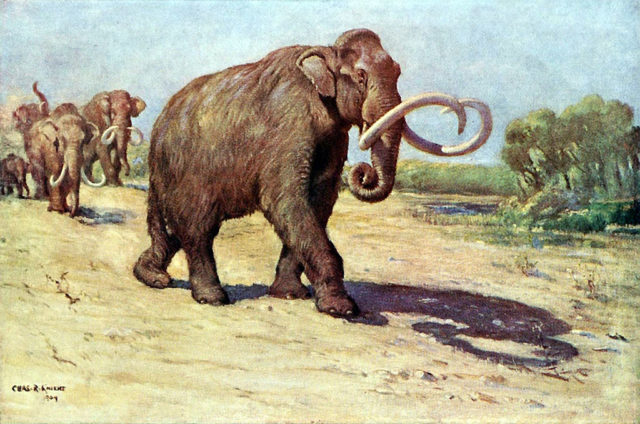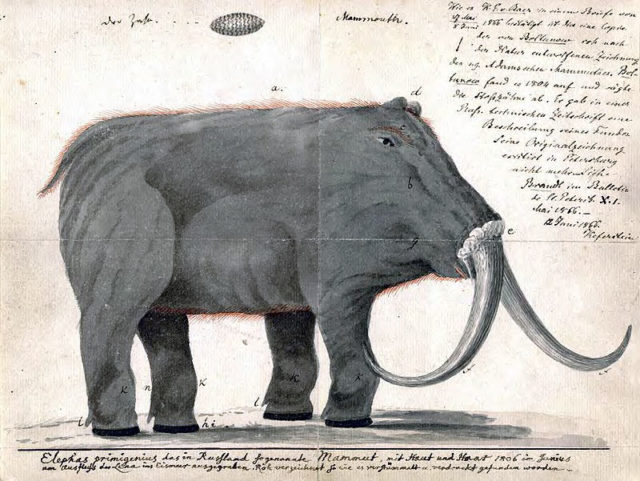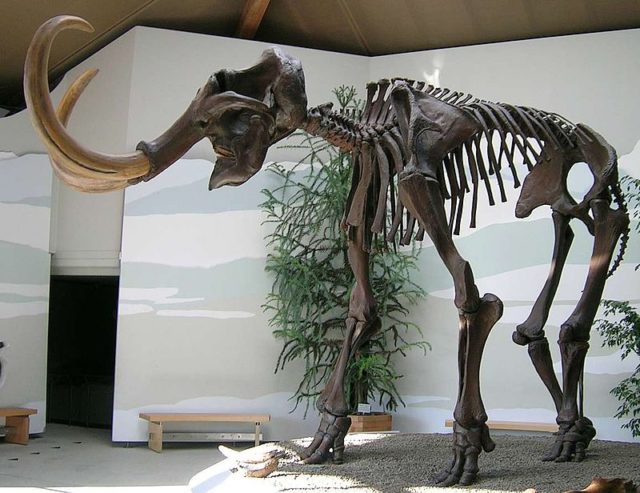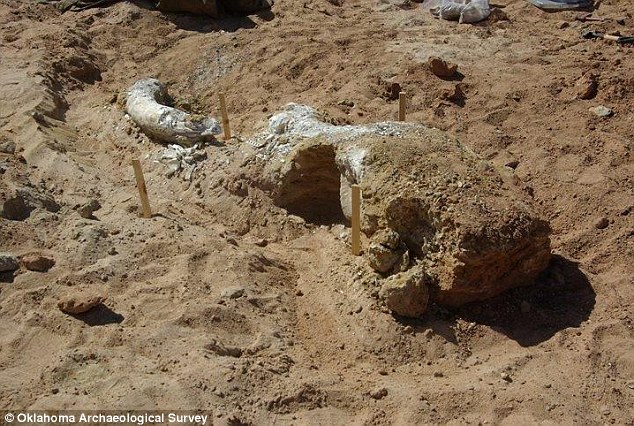A bulldozer worker in Woods county Oklahoma stumbled upon the remains of some ancient beast. The worker reported the incident after accidently discovering two tusks and a part of the skull belonging to an ancient Mammoth.
The finding was reported to a local archaeologist Lee Bennet, who upon inspection confirmed that the remains belonged to a Columbian Mammoth that lived in the region in the distant past.
Bennet said that the Columbian Mammoth was a common inhabitant of the Oklahoma and surrounding regions, and existed in Pleistocene era. The beautiful beast of an animal, weighing the upwards of 10 tons, lived up until some 11,000 years ago, and got extinct partly due to human hunting and other environmental factors as it is suggested.

The report of the discovery was posted on the Facebook page of Oklahoma Archaeological Survey, later the images of the site and the remains were also released on the page.
Archaeologists are struggling to determine the exact age of the particular skull and tusks discovered, however the era in which the animal might have lived is very well known among archaeologists.
Local Oklahoma archaeologists say the region is rich in the Mammoth remains, producing on average two sets of remains every year. A few months ago in Oregon a Mammoth femur was unearthed, and just last year remains of a Mammoth were found in Michigan by some local farmers.

Pleistocene epoch saw the Columbian Mammoth flourish in the region; it is believed that it was not difficult to spot a Mammoth in the region due to their abundance. The main reason behind the fact that there were so many Mammoths in the region was the grassy landscape that covered the Oklahoma and its neighbouring regions.
Unlike the famous WoollyMammoth who preferred a more Arctic environment, Columbian Mammoth successfully thrived in grassy green lands. However there is ample evidence to support that the two species actually lived side by side at some stage, and possibly interbred.

Experts studying the prehistoric Oklahoma made the case of human activity pretty rampant in the region, suggesting that ancient humans lived in the same regions possibly hunting the Columbian Mammoths. Despite the sheer size and strength of the Mammoths, humans had developed to a stage where they could take down a full grown Mammoth, however with some struggle.
Overtime humans got better and better at it, and consequently the population of once thriving Mammoths started decreasing in the region. Experts believe that most of the remains discovered in the regions are possibly the product of human activity, who hunted these beasts for food and used their tusks to make weapons and other accessories like jewellery and cooking pots.

The unearthed remains at Woods County have been received by the Oklahoma State University. A number of expert biologists and archaeologists will now analyse the skull and tusks, the remains will then be returned to the landowner.